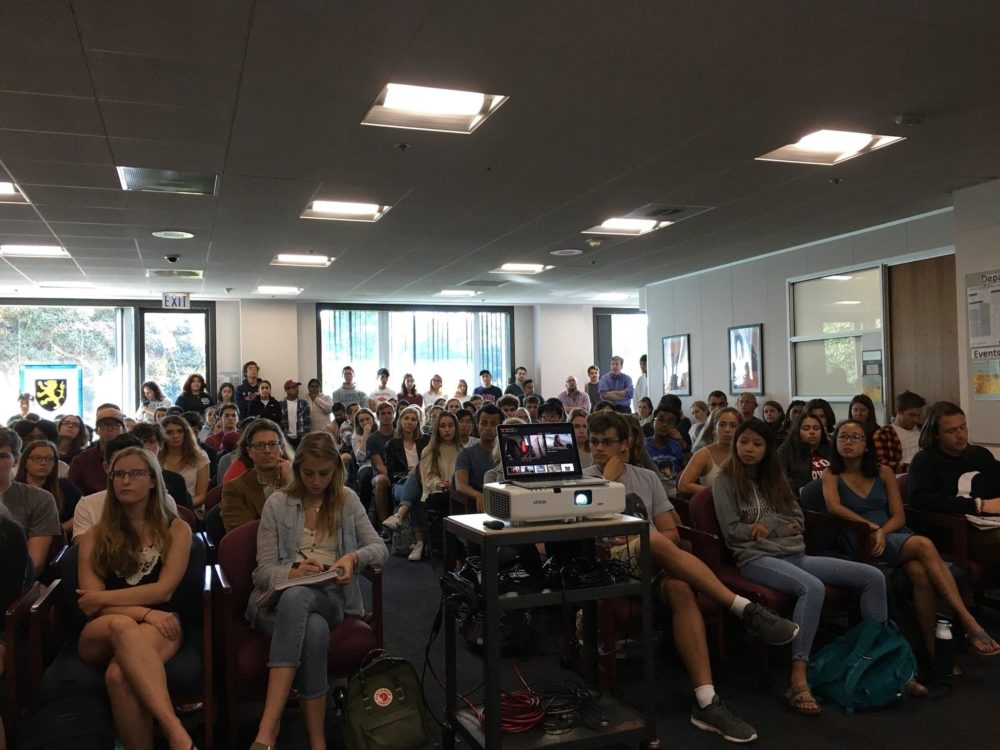
By Nick Abbott ’20, History/International Relations double major
For the first History in the Headlines event of 2018, the History Department hosted “Caged Children: Family Separation Past and Present.” History Department chair Elizabeth Drummond moderated the panel, which included Margarita Ochoa, Amy Woodson-Boulton, and Constance Chen from history; Claudia Sandoval from political science; Traci Voyles from women’s and gender Studies; and Marne Campbell from African American studies. Panelists examined historical examples of familial separation and internment in light of the current controversy and injustice of family separation at the U.S. border.
Sandoval began the discussion by exploring the questions surrounding current issues of family separation, asking the audience to reevaluate their ideas of what is “humane.” She questioned whether it was ever humane to detain migrants, and therefore whether the injustice of separation and detainment ended at children. She also detailed the oftentimes brutal practices of the U.S. border patrol, such as removing food and water from migration trails and using helicopters to blind and scatter migrants. These critical questions and points framed the discussion to analyze U.S. practices and historical examples of familial separation in U.S. history.
Voyles explained that before United States established its border with Mexico, American pioneers bought or captured Native American children, up to the age of 30 and “bound” them into apprenticeships or manual labor. Over 100,000 children lived their childhoods as bonded laborers until it was banned in 1863. This practice only evolved, however, into the institution of “boarding schools.” Native American children were often forced to attend these schools, sometimes over 100 miles from their homes, and were frequently subjected to violent discipline and severe abuse.
Additionally, Chen reminded the audience of Japanese Internment during the Second World War. The U.S. imprisoned over 127,000 Japanese immigrants and Japanese Americans along the West Coast. This internment was the culmination of decades of fear over Asian immigration and perceived lack of assimilation. While this system kept families together as a policy, traditional hierarchies and cultural structures outside of the nuclear family were dismantled.
Ochoa urged the audience to expand their viewpoints on this issue beyond the current context of familial separation. For many of these migrants, their “choice” to leave home is not truly a choice at all, as they seek asylum from increased instability, gang violence, sexual exploitation, and crippling economic stagnation.
Campbell also reminded the audience that the history of familial separation in the U.S. is much longer and more brutal than most Americans realize, with one of the first examples in the American slave trade. When the first slaves arrived in America in 1619, families and communities were split and scattered. At its height in the Antebellum South, a male slave of 16 had been sold twice, and a female slave of 19 had been sold once. Over 90% of those sold were sold away from their families.
History in The Headlines events attempt to shed a more informed and critical light on current events in highlight the necessity of understanding historical contexts when tackling modern issues and tough debates of policy and social justice.



